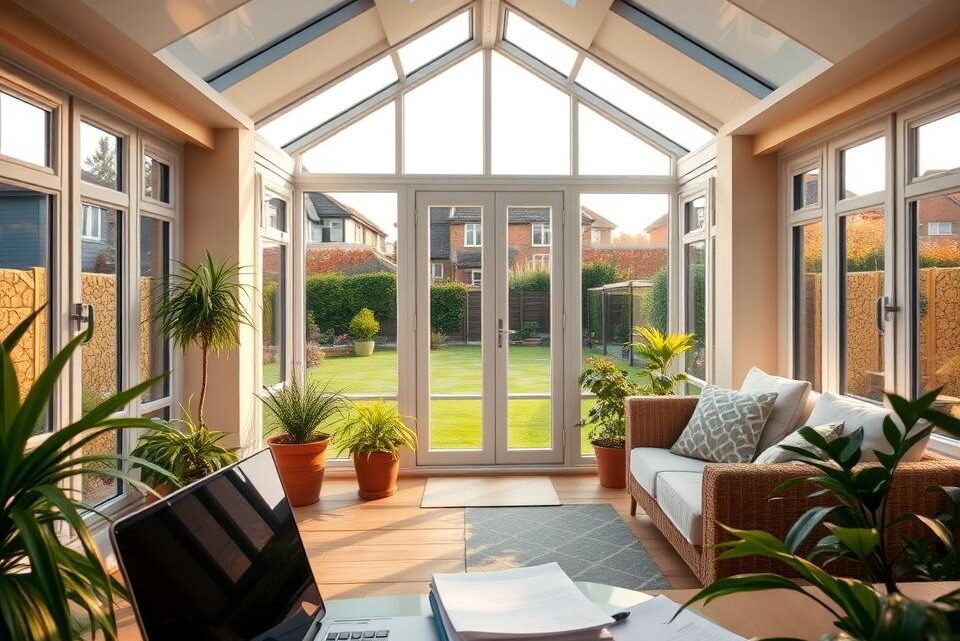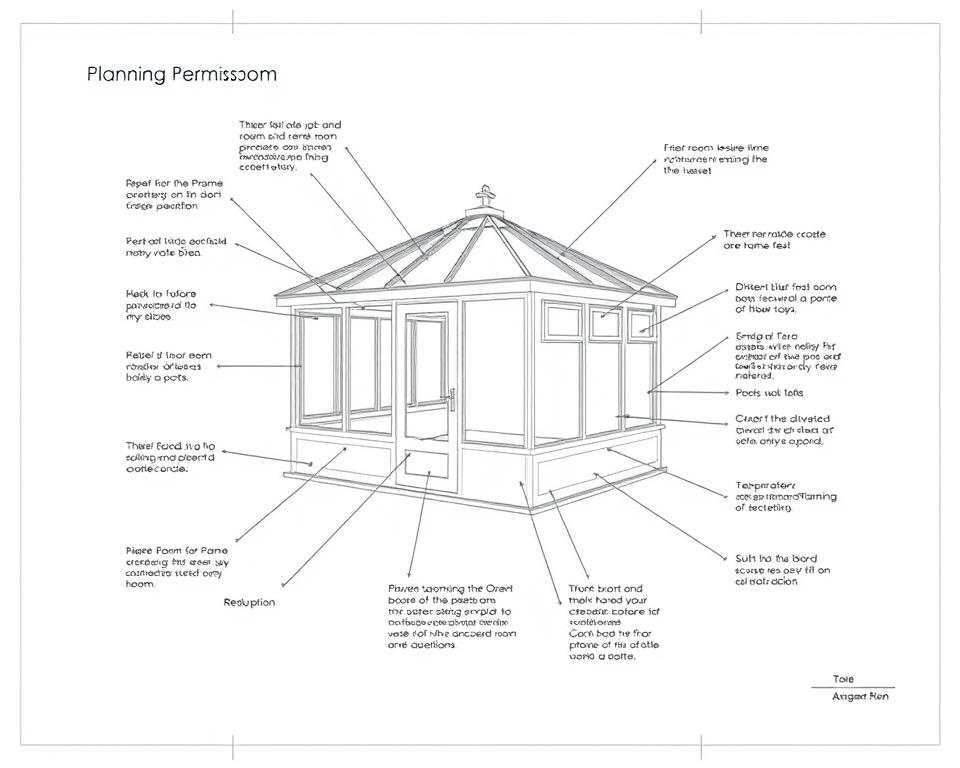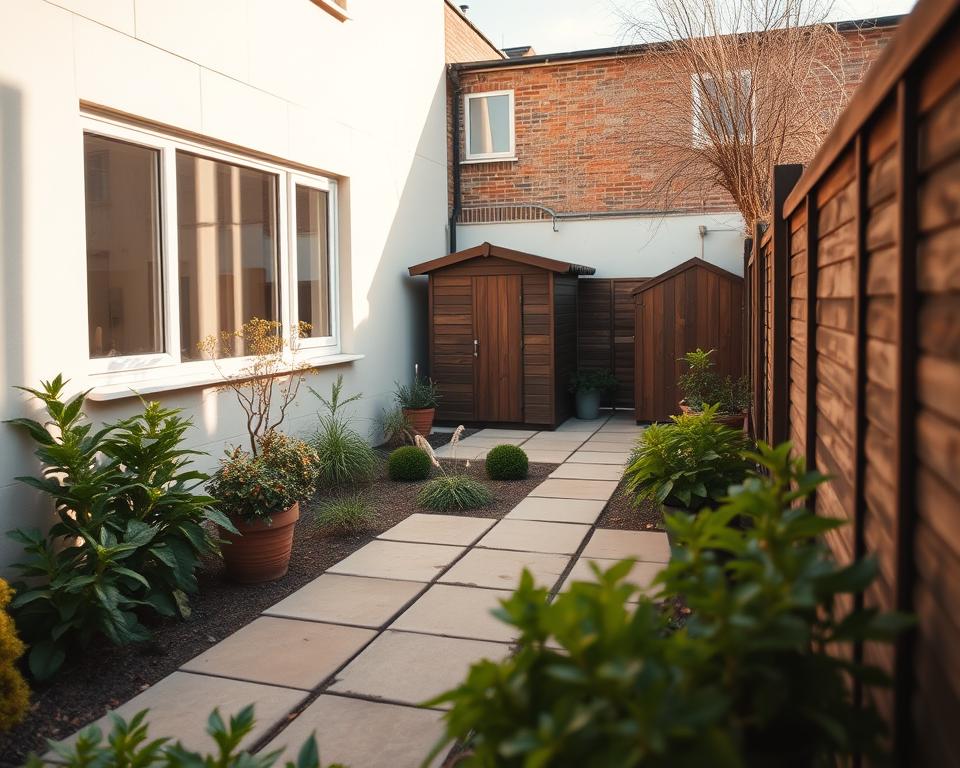do you pay council tax on a garden room?

Garden rooms have become increasingly popular across the UK as homeowners seek extra space for work, leisure, or hobbies. But one question often catches property owners by surprise: will your new garden room council tax UK obligations change? The answer isn’t always straightforward.
Whether you face council tax garden office charges depends on several factors. The way you design, build, and use your garden structure plays a crucial role in determining your outbuilding council tax liability. Some garden rooms remain tax-free, whilst others may trigger additional charges or even require a separate council tax band.
Understanding garden room tax obligations before you build can save you from unexpected bills and help you make smart design choices. This guide examines the rules and regulations that affect council tax on garden buildings, helping you navigate the complexities of UK property taxation.
Inhaltsverzeichnis
Key Takeaways
- Garden rooms typically don’t attract council tax if they remain connected to your main property
- Self-contained units with kitchens and bathrooms may be classified as separate dwellings
- The Valuation Office Agency decides whether your garden room requires separate council tax
- Planning permission type can influence your tax liability status
- Garden offices used exclusively for business may be subject to business rates instead
- Design choices like avoiding fixed cooking facilities can help maintain tax-free status
Understanding Council Tax and Garden Rooms
Before exploring whether garden rooms attract council tax, it’s essential to understand both concepts clearly. The relationship between these structures and local taxation can be complex, depending on various factors including design, usage, and local authority guidelines.
What is Council Tax?
The council tax definition UK residents need to know is straightforward: it’s a local tax paid by households to fund essential services. These services include rubbish collection, police, fire services, and local schools. Every domestic property in England, Scotland, and Wales falls into one of eight bands (A to H), based on its value in April 1991.
Your local council collects this tax monthly, typically over ten months. The amount you pay depends on your property’s band and your local authority’s rates.
Definition of a Garden Room
So what is a garden room exactly? It’s a standalone building situated in your garden, separate from your main house. These structures come in various sizes and designs, from simple wooden cabins to sophisticated insulated buildings with electricity and heating.
Garden rooms differ from conservatories or extensions because they’re detached from your home. They typically feature proper insulation, weatherproofing, and often include electrical connections for year-round use.
Common Uses for Garden Rooms
Modern garden office uses have expanded significantly, especially since remote working became more common. These versatile spaces serve multiple outbuilding purposes:
- Home offices for remote working
- Art studios and creative workshops
- Fitness rooms and yoga studios
- Guest accommodation
- Children’s playrooms
- Entertainment spaces
The flexibility of garden rooms makes them attractive additions to properties across the UK. Their purpose often determines whether they’ll affect your council tax bill.
Do You Pay Council Tax on a Garden Room?
The question of whether you need to pay council tax on a garden room is one that concerns many UK homeowners. In most cases, garden rooms are treated as part of your main property and won’t attract separate council tax charges. This applies whether you’re using the space as a home office, gym, or relaxation area.
Understanding garden room council tax rules helps you plan your project with confidence. The key principle is that garden rooms typically fall under your existing property’s council tax band, just like a conservatory or garage would. Your local council views these structures as extensions of your home rather than independent dwellings.
The situation changes if your garden room meets specific criteria that classify it as self-contained accommodation. This is where outbuilding tax requirements become crucial. A garden room might be considered a separate dwelling if it includes:
- Its own kitchen facilities
- A bathroom with toilet and washing facilities
- Sleeping accommodation
- Independent access without going through the main house
For those wondering do garden offices need council tax, the answer depends on these factors. A simple garden office with just power and heating remains part of your main property. But if you’ve created what amounts to a self-contained flat or annexe, you might face additional council tax charges. Each case is assessed individually by the Valuation Office Agency based on the specific features and use of your garden room.
Key Factors That Determine Council Tax Liability
When assessing whether your garden room might attract council tax, local authorities examine specific characteristics that could classify it as a separate dwelling. Understanding these dwelling classification factors helps property owners make informed decisions about their garden structures.
Self-Contained Living Accommodation
The presence of independent living facilities significantly influences council tax assessment. Self-contained accommodation criteria include having a kitchen, bathroom, and sleeping area within the garden room. If your structure contains all these elements, it may be considered a separate dwelling.
- Fixed cooking facilities (not just a microwave or kettle)
- Plumbed-in bathroom with toilet and washing facilities
- Permanent sleeping arrangements
- Independent heating system

Access and Connection to Main Property
Your garden room access requirements play a crucial role in determining council tax liability. Garden rooms with direct internal access from the main house typically remain part of the primary dwelling. Structures requiring you to step outside to enter often face closer scrutiny.
Shared utilities with the main property strengthen the case for single dwelling status. This includes electricity, water, and gas connections running from the main house rather than independent meters.
Primary Use and Purpose
The intended and actual use of your garden room affects its tax status. Home offices, hobby rooms, and gyms generally don’t attract separate council tax. Garden rooms used as granny annexes or rental accommodation face different considerations, particularly if they meet the self-contained criteria mentioned above.
Planning Permission and Building Regulations
Before installing a garden room, understanding the legal requirements can save you from future complications. Most garden structures fall within specific guidelines that determine whether you need formal approvals.
Garden room planning permission isn’t always necessary. Many homeowners benefit from permitted development rights, which allow certain improvements without formal applications. These rights typically cover garden rooms that stay within specific size limits. Buildings under 2.5 metres in height usually qualify, making them popular choices for those wanting to avoid lengthy approval processes.

Size matters when considering permitted development rights. Single-storey structures shouldn’t exceed 50% of your garden’s total area. The distance from boundaries plays a crucial role too—structures over 2.5 metres tall need to sit at least two metres from any boundary.
Building regulations compliance becomes essential for larger structures. Any garden room exceeding 15 square metres requires building control approval. This ensures your structure meets safety standards for insulation, electrical work, and structural integrity. Smaller buildings between 15 and 30 square metres might qualify for exemption if they don’t contain sleeping accommodation.
Planning to include a bed or bathroom changes everything. These additions typically require both garden room planning permission and full building regulations compliance, regardless of size. Local councils view these features as indicators of independent living space, which could affect your council tax status later.
Always check with your local planning authority before starting construction. Rules can vary between councils, and listed buildings or conservation areas face stricter controls.
How the Valuation Office Agency Assesses Garden Rooms
The Valuation Office Agency (VOA) plays a crucial role in determining whether your garden room should be subject to council tax. Their assessors follow specific guidelines when evaluating these structures to decide if they meet the dwelling criteria UK standards. Understanding their approach can help property owners prepare for inspections and know what to expect.
Inspection Process and Criteria
The VOA assessment process begins when local councils notify them about potential new dwellings. During a garden room inspection, assessors examine several key features:
- Kitchen facilities (sink, cooking equipment, food storage)
- Bathroom amenities (toilet, shower or bath)
- Sleeping accommodation
- Independent access routes
- Utility connections (electricity, water, heating)
Inspectors document each element thoroughly. They photograph the space and measure dimensions. The assessment typically takes 30-60 minutes, depending on the structure’s complexity.

What Constitutes a Separate Dwelling
A garden room becomes a separate dwelling when it provides complete living accommodation. The VOA uses specific criteria:
| Feature | Separate Dwelling | Non-Dwelling |
|---|---|---|
| Kitchen | Full cooking facilities | Tea-making only |
| Bathroom | Complete WC and washing | No facilities |
| Access | External door only | Through main house |
| Usage | Independent living | Ancillary to main home |
Appeals and Disputes
Property owners who disagree with VOA decisions can pursue council tax appeals. The formal process involves submitting evidence within two months of the decision. Common grounds for appeal include:
“The structure remains an integral part of the main dwelling and should not be separately assessed for council tax purposes.”
Appeals require detailed documentation showing the garden room’s connection to the main property. Photographs, building plans, and usage records strengthen your case. The Valuation Tribunal Service reviews appeals independently, typically reaching decisions within six months.
Examples of Garden Rooms That May Attract Council Tax
Certain types of garden rooms are more likely to incur council tax charges than others. Understanding which structures fall into this category can help property owners make informed decisions about their outdoor spaces.
A granny annexe council tax liability typically arises when the structure includes complete living facilities. These annexes usually feature a bedroom, full bathroom with toilet and shower, kitchen area with cooking facilities, and separate utilities. When elderly relatives or adult children occupy these spaces independently, local authorities often classify them as separate dwellings requiring their own council tax band.

A self-contained garden flat represents another common scenario attracting council tax. These structures have their own entrance, lockable door separating them from the main house, and all amenities needed for independent living. Properties with separate postal addresses or individual utility meters strengthen the case for separate council tax assessment.
Rental garden room tax obligations typically apply when owners let their garden structures to tenants. Whether advertised on platforms like Airbnb or rented long-term, these accommodations often meet the criteria for separate dwellings. The presence of tenancy agreements, separate insurance policies, or business use registration can trigger council tax requirements.
Garden rooms converted from existing structures like garages or barns face particular scrutiny. Once fitted with bathrooms and kitchens, these spaces often transition from exempt structures to taxable dwellings, especially if they provide independent accommodation for family members or generate rental income.
Ways to Avoid Council Tax on Your Garden Room
Planning your garden room properly can help you avoid garden room tax complications. With careful design choices and proper documentation, you can ensure your garden structure remains exempt from separate council tax charges. These practical strategies will help you create a functional space whilst keeping it classified as part of your main residence.
Design Considerations
Smart garden office design advice starts with avoiding features that make your structure appear self-contained. Skip the full kitchen installation and opt for a simple kitchenette with basic amenities like a kettle and microwave. Install toilet facilities sparingly – a simple WC without shower facilities reduces the risk of classification as separate accommodation.

Choose open-plan layouts rather than multiple divided rooms. This reinforces the structure’s purpose as an extension of your home rather than independent living quarters. Consider these council tax exemption tips when planning your space:
- Install bi-fold doors facing your main house
- Use matching exterior materials to your home
- Position the structure close to your property
- Avoid separate postal addresses or doorbells
Maintaining Connection to Main House
Physical connection to your main property proves crucial. Create a covered walkway or pergola linking both structures. Run all utilities through your main house’s supply rather than installing separate meters. This demonstrates the garden room functions as an ancillary space.
| Connection Type | Recommended Approach | Tax Impact |
|---|---|---|
| Electricity | Branch from main house consumer unit | Supports exemption |
| Water | Connect via main property supply | Avoids separate dwelling status |
| Access Path | Covered or paved walkway | Shows clear connection |
| Internet | Extend home WiFi or ethernet | Maintains single household status |
Documentation and Evidence
Keep comprehensive records proving your garden room’s ancillary use. Save planning permission documents stating its purpose as a home office or hobby room. Photograph the interior showing its non-residential features. Maintain utility bills demonstrating shared services with your main property.
“A well-documented garden room with clear evidence of its supplementary nature to the main dwelling rarely faces council tax challenges” – Local Government Association guidance
Store receipts for furniture and equipment that support your stated use. If questioned by the Valuation Office Agency, this documentation proves your structure serves as an extension of your home rather than separate accommodation.
Business Rates vs Council Tax for Garden Offices
When your garden room transforms into a workspace, the tax landscape shifts. Garden offices occupy a unique position between personal and commercial use, creating distinct implications for property taxation. Understanding whether your workspace attracts business rates or remains under council tax depends on several crucial factors.
When Business Rates Apply
Garden office business rates typically come into play when your workspace meets specific criteria. If clients regularly visit your premises or you employ staff who work from the garden office, local authorities may classify it as commercial property. The intensity of business use matters significantly – occasional work from home differs vastly from running a full-time enterprise.
Your local council examines physical separation from the main house, dedicated business equipment, and exclusive commercial use. A garden office with its own entrance, separate utilities, and permanent business fixtures faces higher likelihood of business rate assessment. Home office tax implications vary based on these physical characteristics and usage patterns.
Small Business Rate Relief
Small business rate relief eligibility offers significant financial benefits for qualifying garden offices. Most home-based businesses can access this relief scheme, potentially eliminating business rates entirely. The current thresholds provide substantial support:
| Rateable Value | Relief Available | Annual Saving |
|---|---|---|
| Up to £12,000 | 100% relief | Full exemption |
| £12,001 – £15,000 | Tapered relief | Partial reduction |
| Over £15,000 | No relief | Standard rates apply |
Applying for relief requires completing specific forms through your local authority. Documentation proving primary residence use and business activity levels supports your application. Many freelancers and consultants successfully claim full relief, avoiding additional taxation whilst maintaining professional workspaces.
Conclusion
This garden room tax summary shows that most garden structures in the UK won’t increase your council tax bill. The key is ensuring your outbuilding remains part of your main property rather than becoming a separate dwelling. Your garden room should lack self-contained living facilities like kitchens and bathrooms, and it must maintain a clear connection to your house.
Understanding council tax guidance UK regulations helps you make smart decisions about your garden space. Whether you’re planning a home office, gym, or hobby room, keeping these rules in mind lets you enjoy your new space without unexpected tax bills. The Valuation Office Agency looks at specific criteria when assessing garden rooms, and knowing these helps you stay compliant.
This outbuilding regulations overview highlights the importance of proper planning from the start. Design your garden room with council tax considerations in mind, keep good records of its use and construction, and maintain its connection to your main home. By following these guidelines, you can create a valuable addition to your property that enhances your lifestyle without creating additional tax obligations.
FAQ
Do I need to pay council tax on my garden room?
In most cases, no. Garden rooms are typically considered part of your main property and won’t attract separate council tax. However, if your garden room has self-contained living facilities like a kitchen and bathroom, and functions as independent accommodation, it may be classified as a separate dwelling requiring its own council tax band.
What makes a garden room liable for council tax?
A garden room becomes liable for council tax when the Valuation Office Agency determines it’s a self-contained dwelling. This typically means it has its own kitchen, bathroom, sleeping facilities, and separate access. If someone could live there independently without needing to use facilities in the main house, it’s likely to attract separate council tax.
Can I use my garden room as a home office without paying extra council tax?
Yes, you can use your garden room as a home office without paying additional council tax, provided it remains ancillary to your main property. As long as it doesn’t have full living facilities and maintains a connection to your house (such as shared utilities), it won’t be classified as a separate dwelling.
Will installing a toilet in my garden room trigger council tax?
Installing just a toilet typically won’t trigger separate council tax. The Valuation Office Agency looks at the overall facilities and usage. A garden room with only a toilet but no kitchen or sleeping accommodation, and which relies on the main house for other facilities, usually remains part of the main property for council tax purposes.
Do I need planning permission for a garden room, and will this affect council tax?
Garden rooms under 2.5 metres high often fall under permitted development rights and don’t need planning permission. However, larger structures or those with sleeping accommodation do require permission. Having planning permission doesn’t automatically mean you’ll pay separate council tax – these are separate considerations.
What’s the difference between council tax and business rates for garden offices?
If you use your garden room primarily for business with regular client visits, it might attract business rates instead of council tax. However, many home-based businesses qualify for small business rate relief. Council tax applies when the structure is used as living accommodation, whilst business rates apply to commercial use.
How can I ensure my garden room doesn’t attract separate council tax?
Maintain an internal connection to your main house, avoid installing full kitchen facilities, and ensure utilities run through your main property’s supply. Keep documentation showing the garden room’s ancillary use, and design it as a supplementary space rather than independent accommodation.
Can I appeal if my garden room is assessed for separate council tax?
Yes, you can appeal decisions made by the Valuation Office Agency through formal channels. You’ll need to provide evidence that your garden room doesn’t constitute a separate dwelling, such as proof of shared utilities, lack of independent facilities, or documentation showing its ancillary use to the main property.
Will a granny annexe in my garden attract council tax?
A granny annexe with full living facilities (kitchen, bathroom, and bedroom) will likely attract separate council tax, as it constitutes self-contained accommodation. The Valuation Office Agency typically classifies these as separate dwellings, especially if they have independent access and could function as standalone living spaces.
Do building regulations affect council tax liability for garden rooms?
Building regulations approval is required for structures over 15 square metres, but this doesn’t automatically trigger council tax liability. Building regulations ensure safety and compliance, whilst council tax depends on whether the structure constitutes a separate dwelling. These are independent requirements with different criteria.

